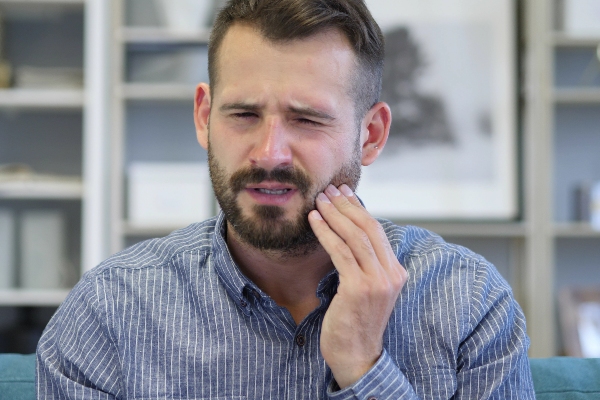 A tooth fracture can occur from many causes, such as accidents, grinding teeth, eating hard foods, and aging. Fractured teeth do not heal themselves, so visiting your general dentistry professional in the event of a cracked, broken, or fractured tooth is always advisable.
A tooth fracture can occur from many causes, such as accidents, grinding teeth, eating hard foods, and aging. Fractured teeth do not heal themselves, so visiting your general dentistry professional in the event of a cracked, broken, or fractured tooth is always advisable.
Diagnosing and treating fractured teeth
Cracks in your teeth can manifest in different ways. Some are painful and serious, requiring immediate treatment, while others are minor. The biggest complication to worry about with a fracture is the possibility of infection, also known as an abscessed tooth, so it is important to identify when a crack exists.
Symptoms
Tiny, hairline fractures in the tooth enamel are fairly common. If they do not cause pain or cosmetic issues, many general dentistry practitioners advise that treatment is not needed. Common symptoms of a more significant tooth fracture include pain while biting or chewing, intermittent pain, temperature sensitivity, gum swelling around the cracked tooth, and sensitivity to sweetness. If a dental infection is setting in, you may experience fever, swollen gums, pain while chewing, temperature sensitivity, bad breath, or sore neck glands. You should see a dentist immediately if you have those symptoms with an expected tooth fracture.
Appearance of cracks
General dentistry offices treat fractured teeth that present in a variety of ways, including:
- Cracks into the gumline: A vertical crack that extends into the gumline should be treated promptly. This type of fracture generally affects the root and may require extraction of the tooth.
- Craze lines: These painless, tiny enamel fractures do not require treatment.
- Cusp fracture: You generally find this type of crack near a dental filling. The pulp is usually not affected, so there should not be associated pain.
- Root fracture: This vertical crack starts below the gumline and moves upward into the tooth. It is generally asymptomatic unless infection sets in, but usually results in extraction of the tooth.
- Split tooth: This is an extensive crack that travels from the top to bottom of the tooth, often below the gumline and frequently segmenting the tooth. It is unlikely that general dentistry can save the entire tooth, but part of it may be salvageable.
Diagnosis
Sometimes you may suspect a crack in a tooth but are not positive because of its size or location. Your general dentistry professional can help by speaking with you about your history and habits, including grinding your teeth or eating hard foods. Your dentist will also perform a visual examination, sometimes with the aid of a magnifying glass, to locate tiny fractures or take an X-ray to identify pulp issues, which may signify a crack. A manual exam using a dental explorer will help the dentist feel for cracks in the tooth enamel or probe for inflammation in the gums, which could indicate a vertical crack. Dental dye may also be used, which can illuminate a crack with color.
Conclusion
Tooth fractures are relatively common, particularly as you age. Although a cracked tooth cannot be completely healed, cracks can be repaired to restore normal appearance and function. For serious or extensive cracks, prompt general dentistry treatment is important to save the tooth and prevent further damage or infection.
Request an appointment or call Allure Dental of Hollywood at 954-514-9749 for an appointment in our Hollywood office.
Related Posts
The primary goal of general dentistry is to prevent dental diseases from occurring. However, that is not always possible. If prevention is no longer possible, the objective becomes to treat the disease.Treating dental diseases is easier and can be more effective if the dentist catches them early. There are several different screening methods used in…
General dentistry issues, such as tooth pain, can make it difficult to carry out everyday tasks. Fortunately, many general dentistry issues can easily be improved with the right combination of good home care and professional treatment. These tips can help you experience less pain so you can resume a normal life.Not all oral pain is…
X-rays are used not only in medical offices but in general dentistry offices as well. This type of assessment is often performed at least once a year at dental checkups, and more often for some patients. While it may seem like a simple step at your biannual appointment, it can be critical for maintaining healthy…
